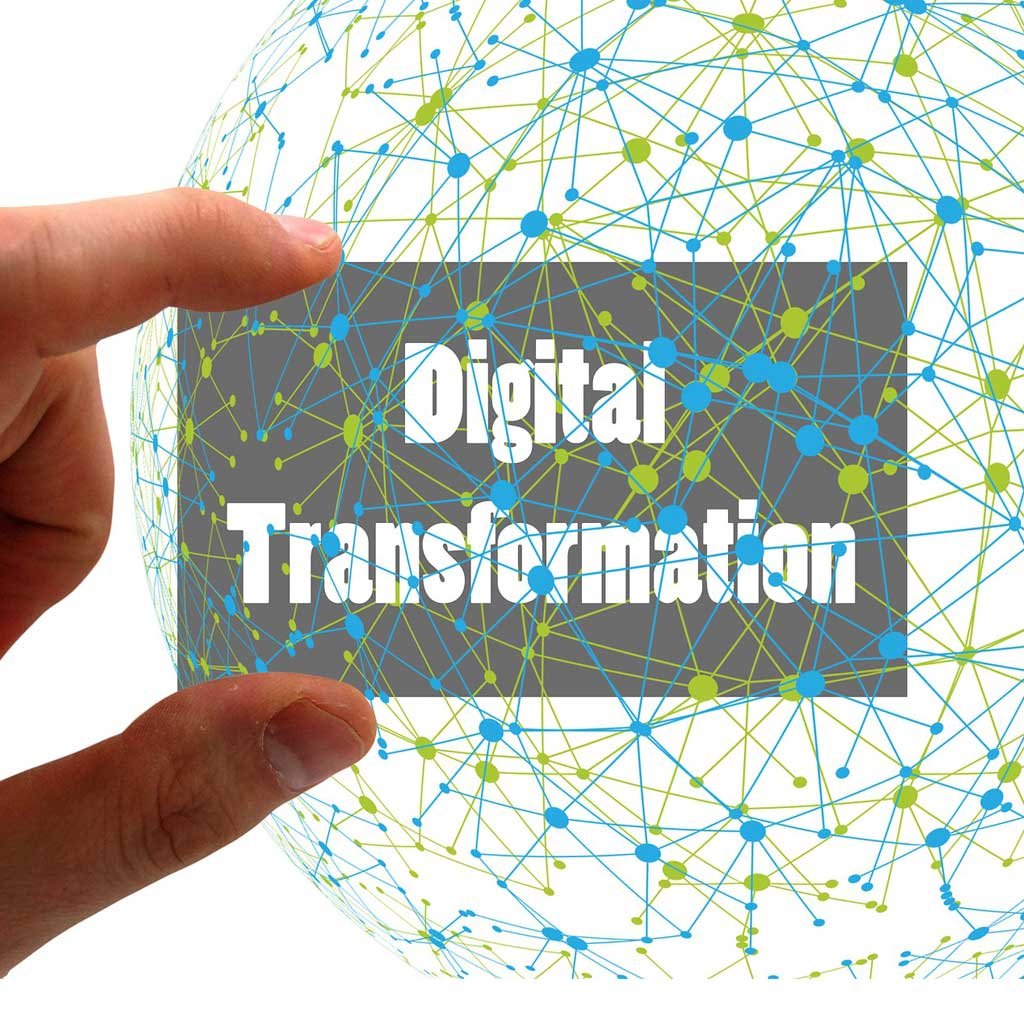How Digital Transformation Impacts Traditional Business Models

Digital transformation, the integration of digital technology into all areas of a business, fundamentally changes how businesses operate and deliver value to customers. It marks a cultural shift that requires organizations to continually challenge the status quo, experiment, and get comfortable with failure. This transformation affects traditional business models across various dimensions, including value creation, customer engagement, operational processes, and revenue streams. This extensive analysis will explore these impacts in detail, providing a comprehensive understanding of how digital transformation reshapes traditional business models.
1. Introduction to Digital Transformation
1.1 Definition and Scope
Digital transformation is the process of using digital technologies to create new or modify existing business processes, culture, and customer experiences to meet changing business and market requirements. This reimagining of business in the digital age is digital transformation.
1.2 Key Drivers of Digital Transformation
Several factors drive digital transformation:
- Technological Advancements: The rapid pace of innovation in areas like artificial intelligence (AI), machine learning, cloud computing, and the Internet of Things (IoT).
- Customer Expectations: Modern customers demand more personalized, convenient, and faster services.
- Competitive Pressure: Companies must innovate to stay competitive in an increasingly digital market.
- Operational Efficiency: Digital tools and processes can significantly reduce costs and increase efficiency.
- Regulatory and Compliance Requirements: New regulations often require the adoption of digital solutions for compliance and reporting.
2. Impacts on Traditional Business Models
2.1 Value Creation
2.1.1 Innovation and Product Development
Digital transformation enables continuous innovation in product development. Traditional business models often relied on linear processes for product development, where research and development (R&D) were siloed and innovations took a long time to reach the market. Digital transformation introduces agile methodologies, facilitating rapid prototyping, testing, and iteration. Companies can leverage big data analytics to gain insights into customer preferences and market trends, leading to the creation of products that better meet customer needs.
For example, the automotive industry has seen a shift from traditional manufacturing to incorporating digital technologies such as AI and IoT in vehicles. Companies like Tesla use over-the-air software updates to continuously improve their vehicles’ performance and add new features, which was inconceivable in the traditional automotive industry.
2.1.2 Customization and Personalization
Digital transformation allows for a high degree of customization and personalization in products and services. Traditional business models typically offered standardized products to achieve economies of scale. In contrast, digital technologies enable mass customization. Businesses can use data analytics to understand individual customer preferences and tailor their offerings accordingly.
E-commerce platforms like Amazon leverage machine learning algorithms to provide personalized recommendations to users, enhancing the customer experience and driving sales. This level of personalization was not possible in the traditional retail model.
2.2 Customer Engagement
2.2.1 Omnichannel Experience
Digital transformation fosters the development of omnichannel experiences, where customers can interact with a brand through multiple channels seamlessly. Traditional business models often relied on single-channel interactions, such as in-store visits or phone calls. Digital transformation integrates online and offline channels, providing a cohesive customer experience.
Retailers like Walmart and Target have implemented omnichannel strategies, allowing customers to shop online, pick up in-store, or have products delivered to their homes. This integration enhances customer convenience and satisfaction.
2.2.2 Real-time Customer Support
Digital tools enable real-time customer support, a significant improvement over traditional models. Traditional businesses often faced challenges in providing timely customer service due to limited communication channels and availability. Digital transformation introduces chatbots, AI-powered assistants, and 24/7 customer service platforms, ensuring customers receive immediate assistance.
For instance, many banks now offer AI-powered chatbots that can handle a wide range of customer inquiries instantly, improving customer satisfaction and operational efficiency.
2.3 Operational Processes
2.3.1 Automation and Efficiency
Digital transformation significantly enhances operational efficiency through automation. Traditional business models relied heavily on manual processes, which were time-consuming and prone to errors. Automation technologies such as robotic process automation (RPA) streamline repetitive tasks, reducing costs and increasing accuracy.
In the manufacturing sector, Industry 4.0 technologies, including IoT and AI, enable smart factories where machines communicate and make decisions autonomously. This level of automation improves production efficiency and reduces downtime.
2.3.2 Data-Driven Decision Making
Digital transformation empowers businesses to make data-driven decisions. Traditional models often depended on intuition and limited data analysis. With the advent of big data and advanced analytics, businesses can now analyze vast amounts of data to gain actionable insights, predict trends, and make informed decisions.
Companies like Netflix use data analytics to make decisions about content creation and recommendation. By analyzing viewing patterns and preferences, Netflix can produce and recommend content that resonates with its audience, driving subscriber growth and retention.
2.4 Revenue Streams
2.4.1 Subscription Models
Digital transformation has popularized subscription-based revenue models. Traditional business models often relied on one-time sales transactions. Digital platforms enable businesses to offer subscription services, providing a steady revenue stream and fostering customer loyalty.
Software companies like Adobe have shifted from selling perpetual licenses to offering subscription-based services through Adobe Creative Cloud. This model ensures a consistent revenue stream and allows for continuous product updates and customer engagement.
2.4.2 Digital Marketplaces
Digital transformation has given rise to digital marketplaces, where businesses can reach a global audience without the limitations of physical locations. Traditional business models often required significant investments in physical infrastructure to expand geographically. Digital marketplaces reduce these barriers, allowing businesses to scale quickly.
Platforms like Etsy and Alibaba enable small businesses to sell their products to a global customer base, providing opportunities for growth that were previously inaccessible.
3. Case Studies
3.1 Amazon: From Bookstore to Digital Giant
Amazon started as an online bookstore in 1994 but has since transformed into a digital giant offering a wide range of products and services, including cloud computing, artificial intelligence, and logistics. Amazon’s digital transformation has been pivotal in its growth and success.
3.1.1 E-commerce Innovation
Amazon’s use of data analytics and AI has revolutionized e-commerce. The company’s recommendation system, powered by machine learning, drives a significant portion of its sales by suggesting products based on customer behavior and preferences.
3.1.2 Amazon Web Services (AWS)
Amazon’s venture into cloud computing with AWS exemplifies how digital transformation can create new revenue streams. AWS is now a leader in cloud services, providing scalable and cost-effective solutions to businesses worldwide. This diversification has significantly contributed to Amazon’s revenue and market position.
3.2 Netflix: Disrupting the Entertainment Industry
Netflix’s transformation from a DVD rental service to a leading streaming platform illustrates the profound impact of digital transformation on traditional business models.
3.2.1 Streaming Services
Netflix disrupted the entertainment industry by leveraging digital technologies to offer on-demand streaming services. This model eliminated the need for physical media and provided customers with instant access to a vast library of content.
3.2.2 Original Content Production
Netflix uses data analytics to guide its content production decisions. By analyzing viewing data, Netflix identifies trends and preferences, allowing it to invest in original content that appeals to its audience. This data-driven approach has resulted in hit shows like “Stranger Things” and “The Crown.”
3.3 General Electric (GE): Embracing Industrial IoT
General Electric, a traditional industrial conglomerate, has embraced digital transformation through the Industrial Internet of Things (IIoT).
3.3.1 Predictive Maintenance
GE uses IIoT technologies to implement predictive maintenance in its operations. By equipping machinery with sensors and analyzing the data collected, GE can predict when maintenance is needed, reducing downtime and operational costs.
3.3.2 Digital Twins
GE’s use of digital twins—virtual replicas of physical assets—enables real-time monitoring and optimization of its products and operations. This digital approach enhances efficiency and provides valuable insights for continuous improvement.
4. Challenges in Digital Transformation
4.1 Organizational Culture
One of the significant challenges in digital transformation is shifting the organizational culture. Traditional business models often have deeply ingrained processes and mindsets that resist change. Successful digital transformation requires a culture that embraces innovation, agility, and continuous learning.
4.2 Legacy Systems
Many traditional businesses rely on legacy systems that are outdated and not compatible with modern digital technologies. Integrating these systems with new digital solutions can be complex and costly, often requiring significant investment and expertise.
4.3 Cybersecurity
As businesses adopt digital technologies, cybersecurity becomes a critical concern. Protecting sensitive data and ensuring the security of digital infrastructure is paramount. Traditional businesses may lack the necessary cybersecurity measures, making them vulnerable to cyber threats.
4.4 Skill Gaps
Digital transformation requires a workforce skilled in new technologies. Traditional businesses often face skill gaps, as their employees may not have the necessary digital expertise. Investing in training and development is essential to equip the workforce with the skills needed for a digital future.
5. Future Trends in Digital Transformation
5.1 Artificial Intelligence and Machine Learning
AI and machine learning will continue to play a significant role in digital transformation. These technologies enable businesses to automate complex processes, gain deeper insights from data, and create more personalized customer experiences.
5.2 Blockchain Technology
Blockchain technology offers potential for secure and transparent transactions, impacting various industries, including finance, supply chain, and healthcare. Businesses can leverage blockchain to enhance security, traceability, and trust in their operations.
5.3 Edge Computing
Edge computing involves processing data closer to its source, reducing latency and improving real-time decision-making. This technology is particularly relevant for industries like manufacturing, healthcare, and autonomous vehicles, where timely data processing is critical.
5.4 5G Connectivity
The rollout of 5G networks will provide faster and more reliable internet connectivity, enabling the proliferation of IoT devices and enhancing digital experiences. Businesses can leverage 5G to develop innovative applications and services that were not possible with previous technologies.
5.5 Augmented Reality (AR) and Virtual Reality (VR)
AR and VR technologies offer immersive experiences that can transform various industries, including retail, healthcare, and education. Businesses can use these technologies to create interactive and engaging customer experiences, enhance training programs, and improve remote collaboration.
Digital transformation is not just a technological shift but a comprehensive change that impacts traditional business models across various dimensions. It enhances value creation through continuous innovation and personalization, revolutionizes customer engagement with omnichannel experiences and real-time support, improves operational processes through automation and data-driven decision-making, and diversifies revenue streams with subscription models and digital marketplaces.
While digital transformation presents challenges such as cultural shifts, legacy systems, cybersecurity concerns, and skill gaps, the benefits far outweigh these obstacles. Businesses that successfully navigate digital transformation can achieve significant competitive advantages, operational efficiencies, and new growth opportunities.
As technologies continue to evolve, the impact of digital transformation will only intensify, making it imperative for traditional businesses to embrace this change and adapt their models to thrive in the digital age. The future of business lies in the ability to innovate, leverage data, and create seamless, personalized experiences for customers, all of which are hallmarks of successful digital transformation.

